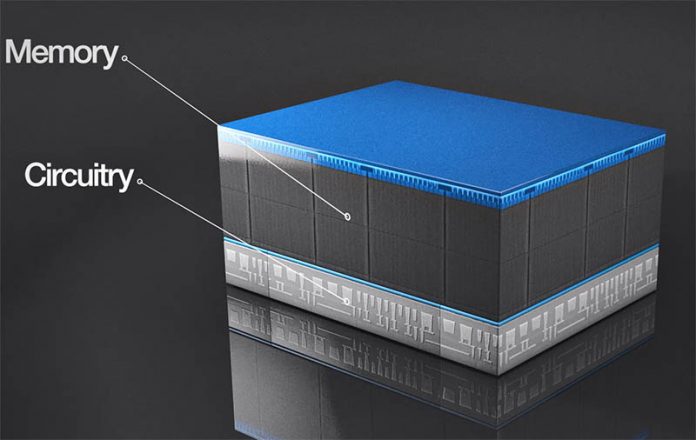Today, Micron made a big announcement in the world of NAND. The company has announced not just the development, but the fact that its new 176-Layer NAND is just just launching, but is already shipping.
Micron 176-Layer NAND
Since we love market dynamics slides at STH, Micron had a really interesting slide from a NAND maker’s point of view comparing SSD v. HDD shipments. It basically is showing that SSD shipments are going up, which is no surprise. What some may find surprising is that Gartner is projecting that in four years the hard drive market will be less than half the volume size it is today. Micron is also showing some of the trends for SSDs and many of those are outside of the segments we cover.
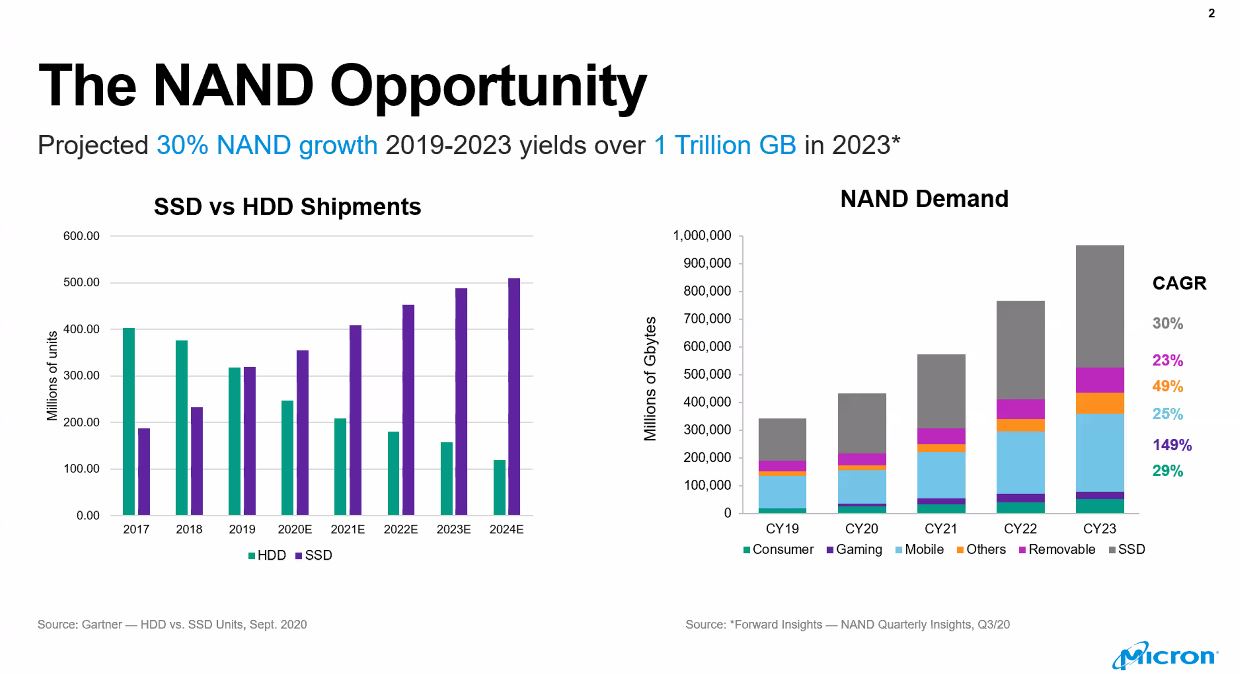
The big announcement is that Micron has 176-Layer NAND in its portfolio. Higher layer counts mean higher density. Micron is at first shipping at 512G die sizes. In addition to the higher capacity in a smaller form factor, the company also says that it is increasing the performance with faster transfers and lower latencies.
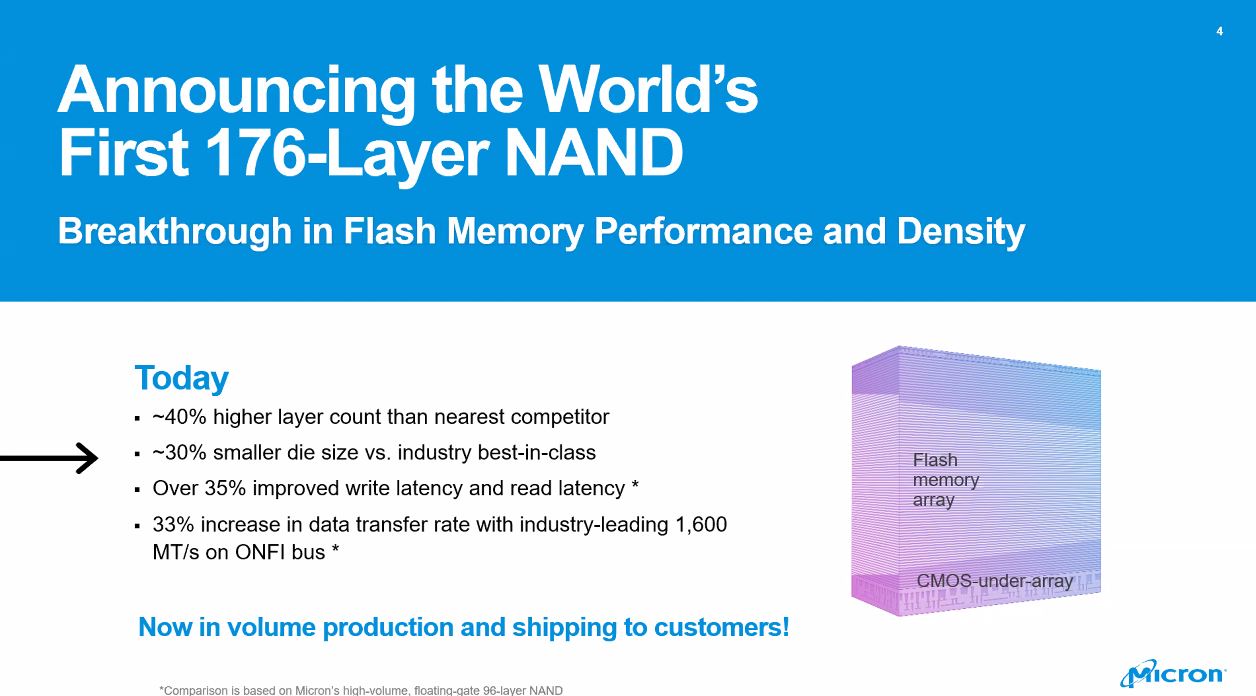
A bit part of this is Micron’s stacked replacement gate architecture. Effectively, Micron has two 88-layer stacks to get them to 176-Layer NAND. This type of stacking Micron has been using for generations. Most of the industry is still on 64-96 Layer stacks but some products have moved into the 100-128 layer domain which makes this more impressive.
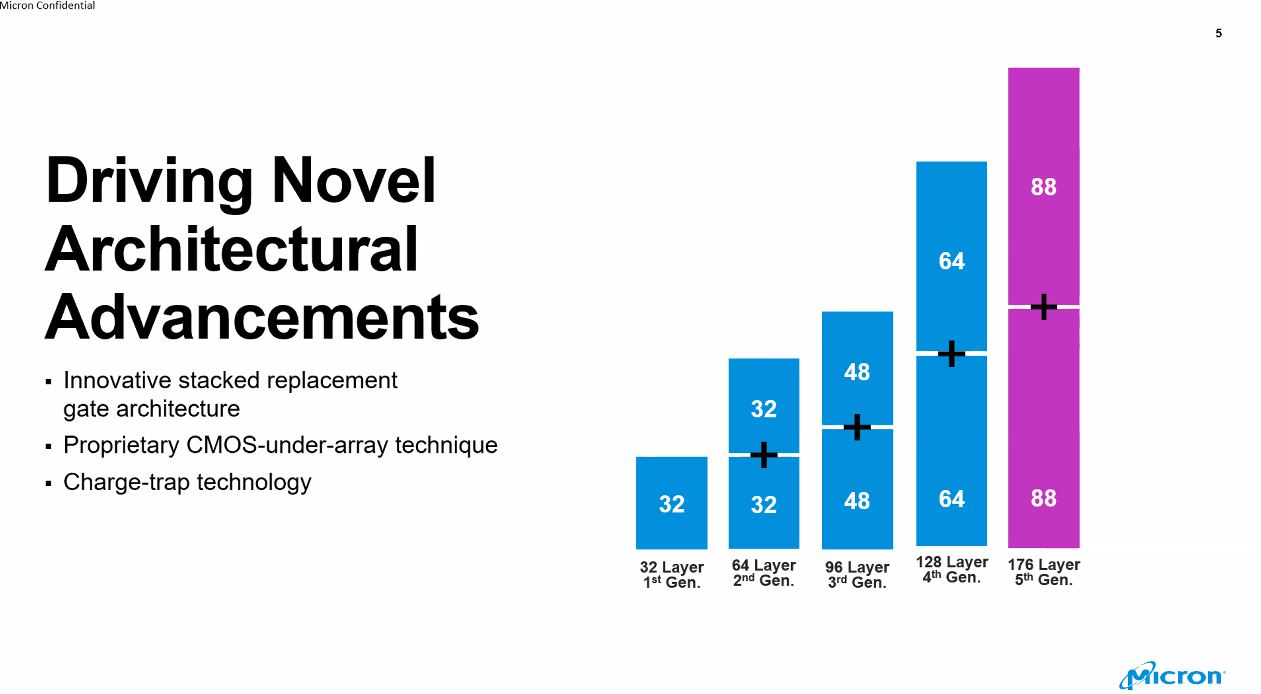
Since this is designed for not just data center SSDs, but also edge/ embedded, consumer, mobile, and other applications, size and thickness matters. Micron says the new 176L 3D NAND is about the same thickness as its 64L design.
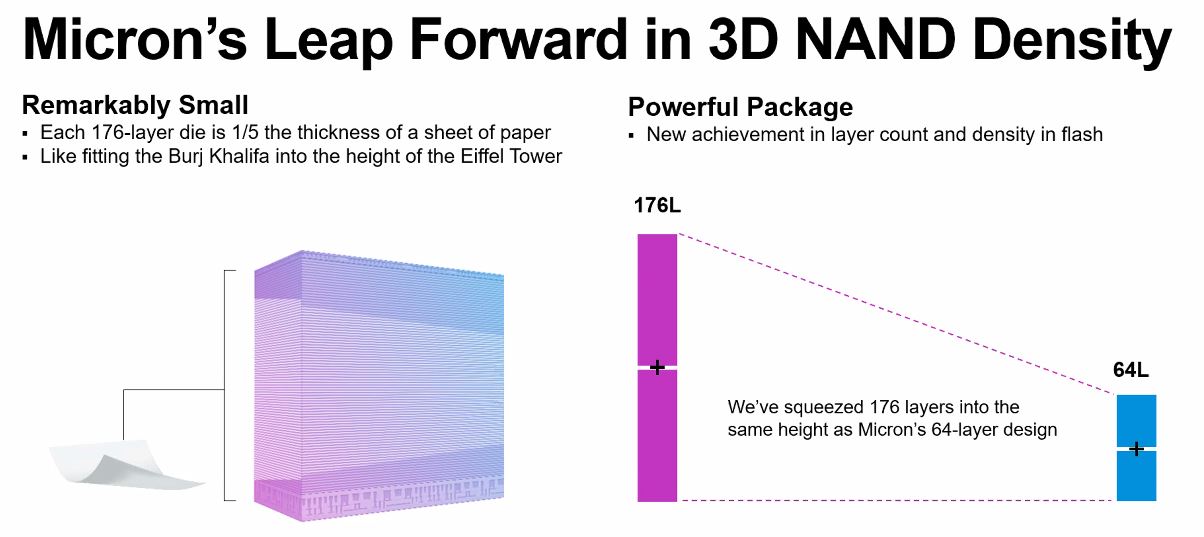
Micron said it is shipping 176L NAND in Crucial brand drives today. Some companies announce when they have new technology but have yet to put it into product and full production. Micron is showing that it is already shipping its new TLC 3D NAND.
Final Words
Micron declined to give timelines on this technology coming to the data center. We suspect that since Micron discussed how this NAND will help the cloud, it means there will be data center products coming. Still, this is going to enable the next-generation of capacity increases which will again push hard drives further to the realm of low-cost capacity storage
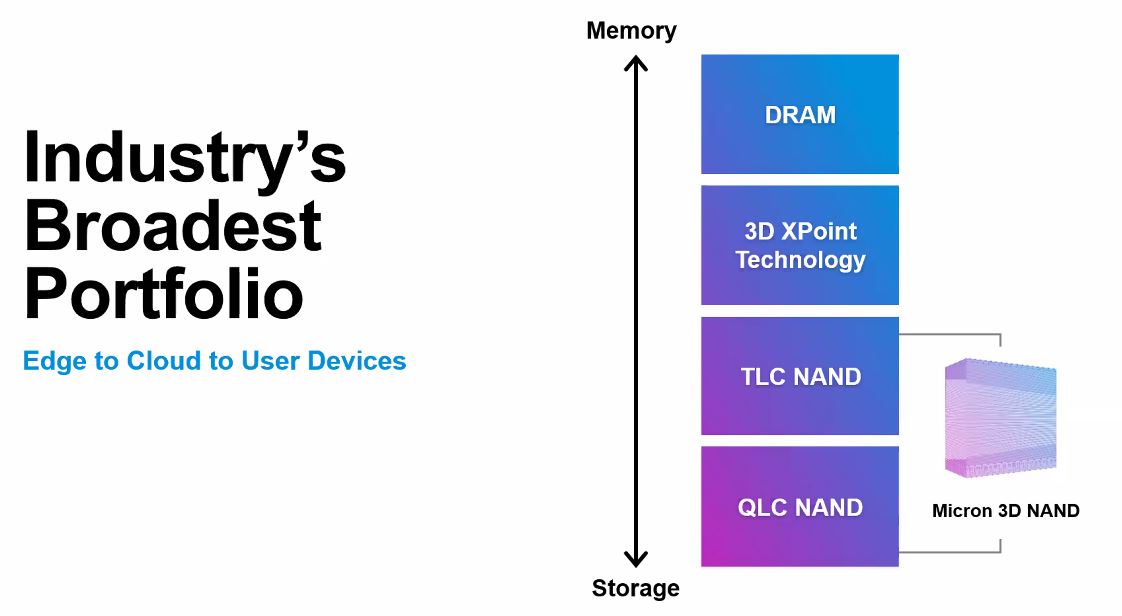
Something Micron highlighted is that it has DRAM, 3D XPoint, and both TLC and QLC NAND in its portfolio. With SK hynix Acquiring the Intel NAND Storage Business Intel will be left with only 3D XPoint. Samsung and SK hynix will not have 3D XPoint. Others will have only NAND. This is a fairly strong foundation for Micron to help build a data-centric business in the future.

